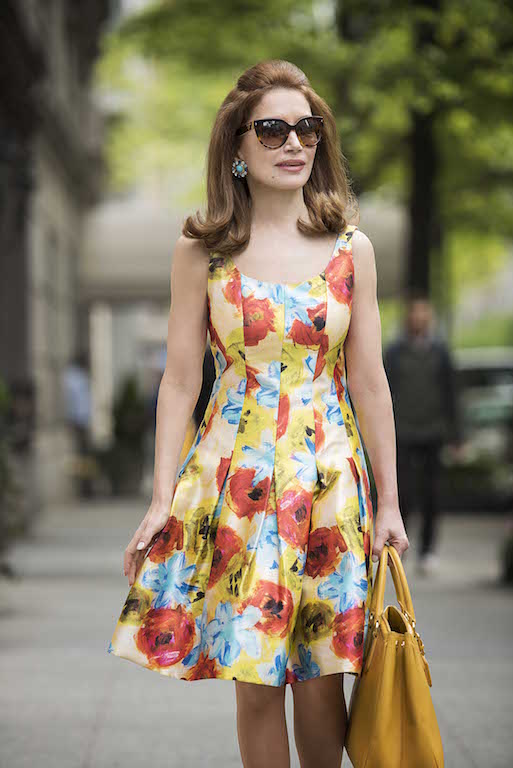Jean Shafiroff may well be the first of a new breed of celebrity philanthropist. One of the most visible figures on the New York and Hamptons’ charity circuits, Shafiroff, author of Successful Philanthropy: How to Make a Life by What You Give, is planning a busy summer on the East End. We recently caught up with her to discuss the book, the American Heart Association Award she’ll receive on June 25 in Bridgehampton and how everyone can be a philanthropist, no matter their net worth.
How the Hamptons and Manhattan charity circuits differ: First, the East End season is very short—there are four or five events every Saturday night. In New York, most galas and dinners take place during the week. The universe of those who attend events in the Hamptons is quite a bit smaller than in New York. Many people want to relax with family when they’re out here. They’re in a holiday mode and would rather not attend events. However, many still support the charities by purchasing tables or tickets to the galas. Then there is a whole group of Manhattan regulars who will come out for causes near and dear to their hearts, as well as local Hamptonites and people from outside New York.
Becoming involved with charities on the East End: My husband and I have spent the past 20 summers in the Hamptons. A few years after we joined the Southampton Bath & Tennis Club, I became active with the club’s Charitable Foundation. Then a number of years later, I became involved with the Southampton Hospital’s Summer Party. And from there my involvement with charities in the Hamptons grew.
Her main Hamptons charities today: Southampton Hospital, the Ellen Hermanson Foundation, which benefits the Breast Center at the hospital and the Southampton Animal Shelter. I’ve worked with Southampton Hospital for more than 10 years and chaired their Summer Party for three years. I’ve also chaired the Animal Shelter galas for five years. This year, I will chair the Ellen Hermanson Foundation’s Summer Gala for the second time.
Summer 2016 plans: In addition to chairing the Southampton Animal Shelter Foundation’s gala on July 16 and the Ellen Hermanson gala on July 23, I will attend many charity events throughout the season. I will be holding a party in New York for the Southampton Hospital’s Cancer Center on June 23. Along with Dr. Frank Spencer, the noted surgeon, I will be honored by the American Heart Association at its Heart of the Hamptons Ball on June 25. On July 2, the Southampton Historical Society will hold a book signing party for my book.
Her earliest experiences with charity work: I attended Catholic grammar and high school, and the nuns were instrumental in teaching the importance of giving back. My dad, who was a music school teacher, was another role model. He truly cared about his students, cared that they succeeded, so the idea of helping others became ingrained. When I graduated [with a BS degree in physical therapy from the Columbia University College of Physicians and Surgeons and an MBA from Columbia University], I worked at St. Luke’s Hospital. There, I saw a great deal of human suffering. You can’t help but develop compassion when you experience that.
On how her Columbia MBA helps: It has been a great asset. A charity needs to be run like a business. Volunteer fund-raising is a very serious business. There are many legal components to everything I do—the education I received has been very useful.
The most challenging part of philanthropy: It is always a great deal of work to raise funds and make an event successful. As a volunteer fundraiser, you have to be willing to accept rejection. People can be rude to volunteers, which is something I do not understand. Volunteers are giving up their free time and they must be treated with dignity and respect.
The most enjoyable aspect: Seeing how your work can change lives. Today, I am on seven charity boards. One of these charities, the New York City Mission Society, has many programs that have helped inner-city children go on to colleges and have meaningful careers. It is very gratifying to know that you were part of creating that change. Seeing the good these programs do makes you want to be involved with philanthropy. At least it has for me.
Getting a donor to say yes: A no today can be a yes tomorrow. If [potential donors are] reluctant to donate, I suggest taking them on a tour of a charity’s facilities. Sometimes when they see the great work being done, they do a turnaround. A tiny donation can become a much bigger one. For larger gifts, there are naming opportunities. But I believe naming should have time limits because if a facility needs renovating in the future, where will the funds come from? I discuss these issues in my book.
Dealing with donor fatigue when there are so many noteworthy causes to support: Personally, I do not see this as an issue. Most people tend to pick and choose their causes carefully. Many recognize the importance of philanthropy. I feel very blessed and that it is my obligation to give back. Through my travels to places like Cambodia, Colombia, Costa Rica and China, I have seen enormous poverty. I’ve come back from these trips with a whole different mindset.
On why New Yorkers and Hamptonites appear to be more involved with charities than their counterparts in major European cities and resorts: It’s part of the American culture. I think in some countries the assumption is the government will take care of people in need. Also the taxes in those countries tend to be higher.
Looking beyond Hamptons charities this summer: This June, I plan to travel to Nicaragua, the second poorest country in the Western Hemisphere. We will meet with different animal rescue groups and hope to bring back three rescue dogs.
The philanthropists she admires: Michael Bloomberg, a self-made man who ran the city for 12 years and did a wonderful job. He has donated enormous amounts of money to several causes. Bill Gates and Warren Buffet for starting The Giving Pledge and for deciding to give away at least 50 percent of their fortunes. John Paulson, who gifted $400 million to the Engineering School at Harvard, $100 million to Central Park and $5 million to Southampton Hospital. The Koch brothers have contributed to a lot of philanthropic causes. Leonard Lauder, who donated $1.1 billion worth of Cubist art to the Metropolitan Art Museum. Stephen and Christine Schwarzman, who have gifted hundreds of millions for education and $100 million to the New York Public Library.
You don’t need to be a billionaire to be a philanthropist: I have redefined the word “philanthropist” to include people who give their time and use their knowledge and skills to help others. You can teach someone how to play baseball, act as a Big Brother or Sister, or read to the blind. Even if you don’t have a large amount of money for philanthropy, if you have gifts, I feel you should use them to do what you can, when you can. Volunteers play a vitally important role in this country, but unfortunately volunteerism rates are down. Hopefully, those numbers will increase!
It doesn’t have to be a big commitment: Many people are having a harder time making ends meet; they’re working longer hours or taking on two jobs. But even if you just have an hour a month to give, it can be incredibly helpful.
Making sure a charity manages its money well: In my book I give a step- by-step guide on how to choose a charity. There are websites, too, that help you analyze a charity. The ideal expenses ratio is 20 percent for fund-raising and administrative costs [with] 80 percent going directly to programs.
Getting millennials involved with fund-raising: Many young people initially get involved by attending charity social events where they can meet other young people and where they might do a little job networking. This can be the beginning of a lifetime involvement with a charity.
On being the most glamorously dressed philanthropist at East End charity events: I love fashion—one of my boards is the Couture Council of the Fashion Institute of Technology. Of course, in the Hamptons dress is a bit more casual. Sometimes the most striking look can come from a vintage shop. I once purchased a Marchesa gown from JCPenney. I accessorized it as I would any other gown. When I went out that evening, a reporter asked if I was wearing Dior and I replied, “No, I’m wearing a gown from JC Penney!”
On plans to donate her gowns to a museum: I would like to give my gown collection to a museum in the future. One of my Oscar de la Renta gowns is currently on exhibit at the de Young Museum in San Francisco, in a show curated by André Leon Talley.





















